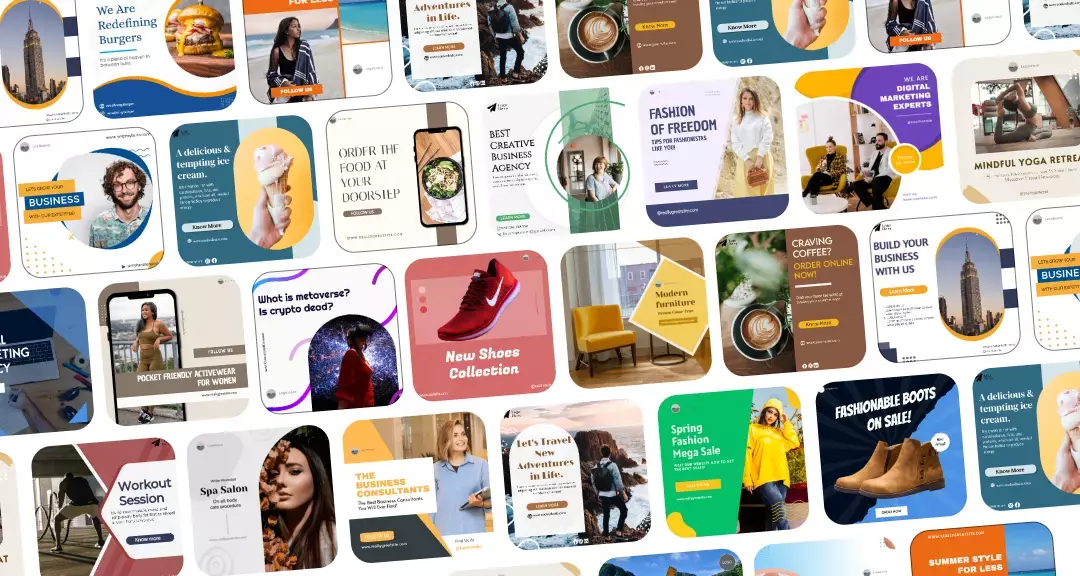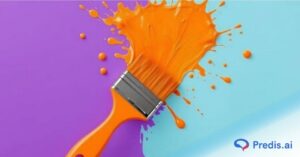Did you know? Studies show that emotional ads are twice as effective as rational ones in driving consumer decisions! Emotional advertising is a marketing strategy that appeals to people’s feelings, desires, and personal experiences rather than just focusing on product features. It taps into emotions like happiness, nostalgia, love, fear, as well as excitement to create a deep connection with the audience.
Brands use this approach to make their products more relatable and memorable, encouraging consumers to feel something before they buy—whether it’s a sense of belonging (Coca-Cola’s “Share a Coke”), inspiration (Nike’s “Just Do It”), or compassion (P&G’s “Thank You, Mom”).
One of the most famous emotional advertisements in the U.S. is Coca-Cola’s “Share a Coke” campaign. The campaign, launched in 2011 in Australia and later in the U.S. in 2014, replaced the Coca-Cola logo with popular names on its bottles and cans. It encouraged people to find bottles with their names or their loved ones’ names as well as share them. This personalized approach triggered deep emotional connections by making consumers feel special and valued.
Many consumers actively searched for bottles with their names or their loved ones’ names, increasing sales significantly.
People were motivated to buy more than one bottle, making Coca-Cola not just a drink but a memorable gift.
The emotional connection made consumers loyal to the brand, ensuring repeat purchases even after the campaign ended.
This campaign wasn’t just about selling soda but about selling a feeling of belonging, connection, and joy. Emotional advertising worked here because it created a personal bond between the product and the consumer.
What is Emotional Advertising?
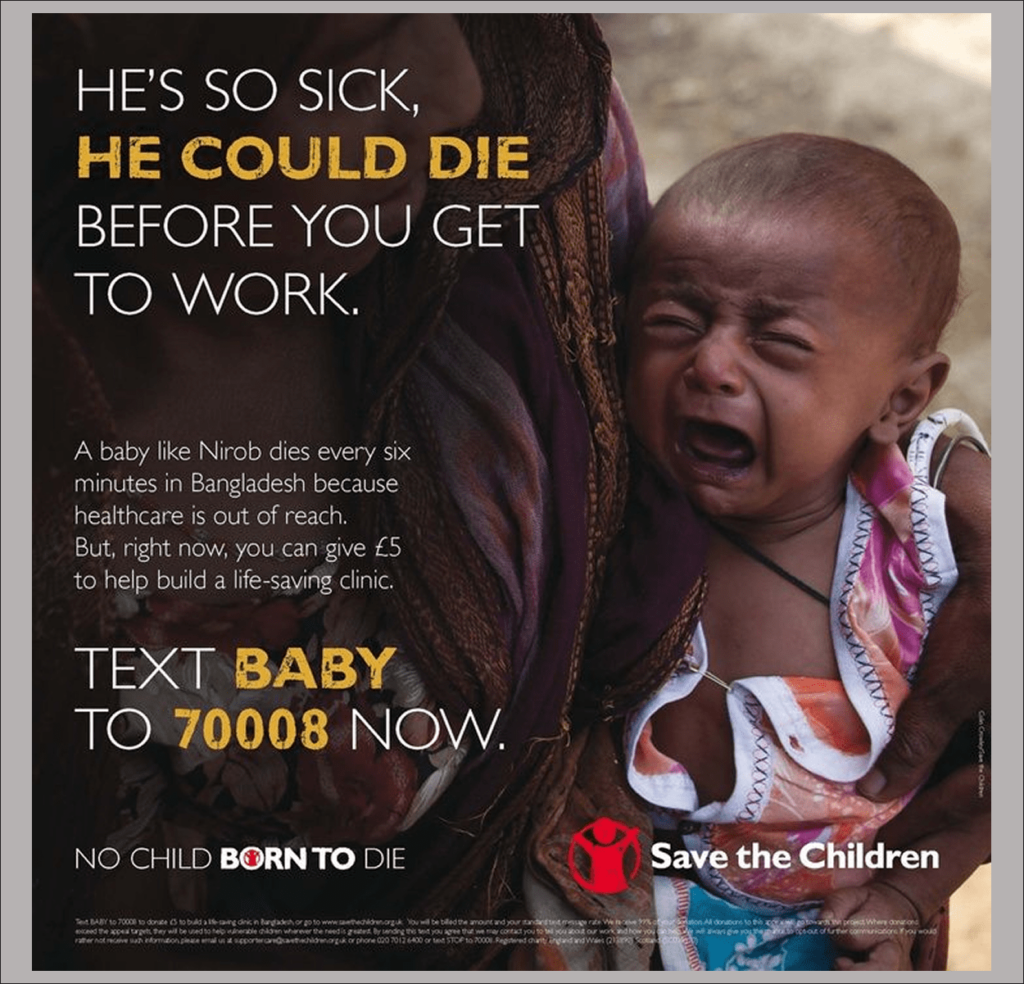
Emotional Advertising is about how you make your customers feel about the product or the service, so they connect to a deep level. Instead of just focusing on the product, it taps into human feelings such as happiness, apathy, love, fear, or enthusiasm to influence decisions.
People do not always buy on the basis of logic, they buy on the basis of emotions. In fact, studies show that 95% of purchases are driven by emotions, not just from facts. When a brand makes you feel something, you tend to remember it, trust it, and even give recommend it to others.
The use of social media, content marketing, right hashtags, etc plays the part just right!
A perfect example of emotional advertising
1. Coca -Cola’s “Share a Coke” Campaign
Coca-Cola swapped its logo for people’s names, making every bottle feel personal.
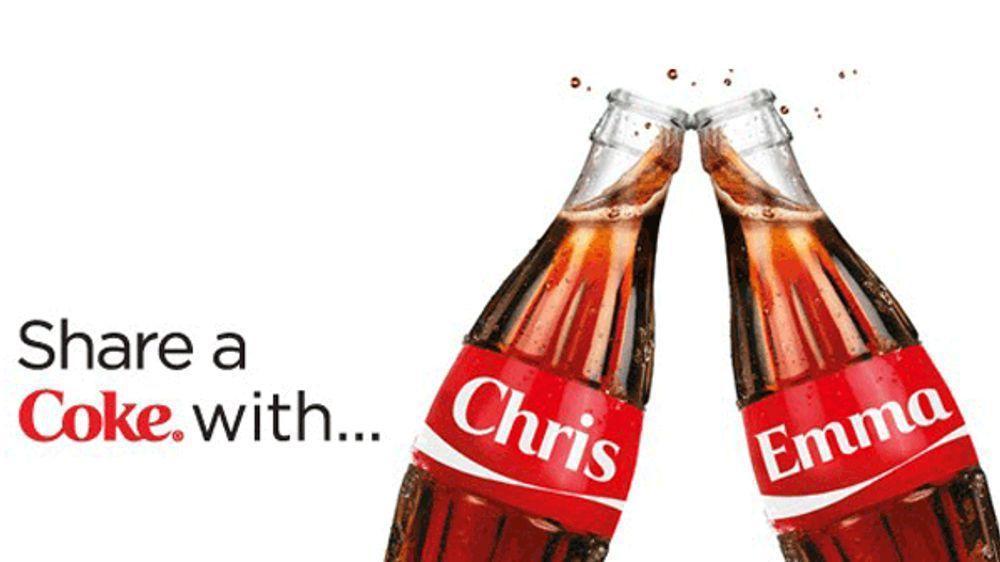
People discovered bottles of names or names of their loved ones, which encouraged them to buy as well as share.
US sales increased by 7% after years with a decline in campaign.
2. Nikes “just do it”
Nike ads not only sell shoes – they sell determination, flexibility and ambitions.
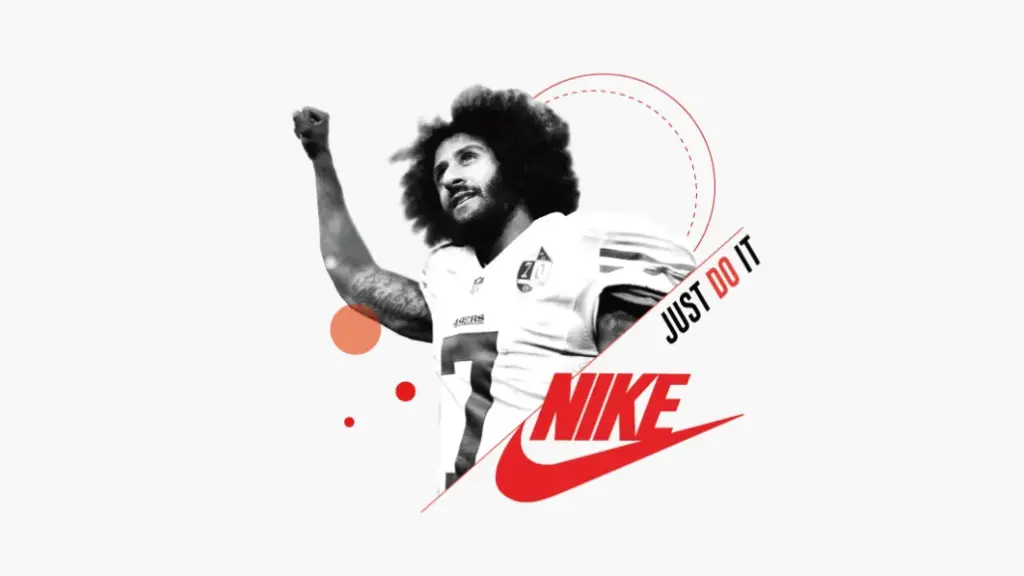
Colin Kopronic (“Believe something, even though it means sacrificing everything.”) The campaign talked around the world.
Despite the controversy, the NIKE sales increased by 31% in just three days of ADS broadcast.
3. P&GS “Thank you, Mom” (Olympic Ads)
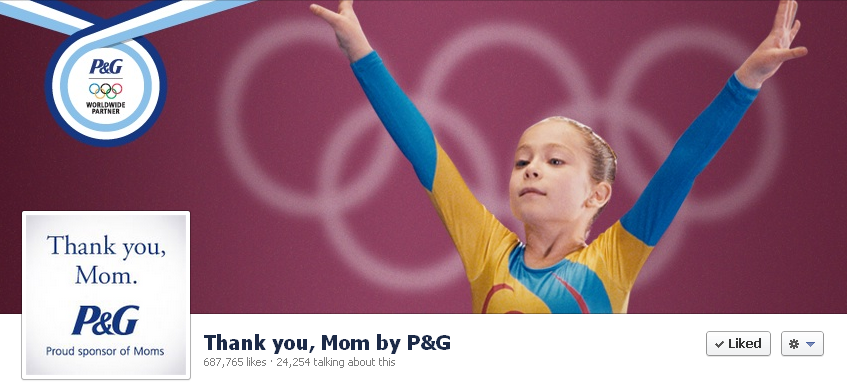
The ad showed how mothers support children from childhood to become Olympic champion.
It hit the house emotionally, especially for parents, which led to promoting brand chairs and loyalty.
How Brands Use Emotional Advertising Today
- Fear & Urgency: Insurance companies show real-life risks to push people into taking action.
- Happiness & Positivity: Brands like Disney and McDonald’s use feel-good ads to associate their products with joy.
- Nostalgia: Companies like Nintendo and Pepsi bring back old-school branding to remind people of their childhood, making them more likely to buy.
Emotional Advertising isn’t just about selling—it’s about making a connection. When a brand makes you laugh, cry, or feel inspired, you don’t just remember the ad—you remember the brand. And in a crowded market, that’s what makes all the difference.
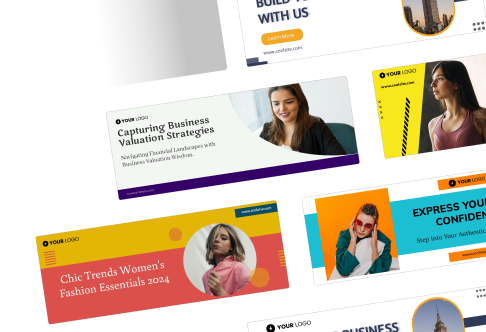
The Benefits of Emotional Advertising For Your Brand
The role of Emotional appeal in ads is linked to people at a deep level, making them more likely to believe, connect, as well as buy from their brand. Let’s understand why emotional ads can be a game changer for your business here.
1. Strong Brand Connections
Think of the last advertisement that is really stuck in your head. It made you feel something, right? Emotional advertising helps brands to have deep, personal relationships with the audience. When people belong to the message of a brand, they are more likely to stay around. Examples: Apple’s holiday ads often tell heartfelt stories that focus on family and human connections, making the brand more than just a technical company.
2. Brand Recall
People don’t just miss facts, they remember emotions. Studies show that emotional ads are 31% more effective in production brands than purely rational people.
Examples: The specialty of Clidsdles and adorable puppies in the Super Bowl ad Badwizer is unforgettable when they tap indifference and heat.
3. Customer increases loyalty
When customers feel emotionally associated with a brand, they become loyal fans, not just a buyer. A study of Capgemini found that emotional attachment could increase customer loyalty by 52%.
Examples: Nike inspires athletes at all levels of motivational ads, and makes customers feel that they are part of someone bigger than just buying sneakers.
4. Promises & Commitment
People like to share content that makes them feel something. Emotional ads produce more social media and biological engagement than traditional ads.
Example: Always’ #LikeAGirl campaign went viral when it hit a raga with people, who have been seen more than 90 million times and had global conversation about gender equality.
5. Higher Conversion Rates
Emotions affect buying decisions more than logic. Research held by the Harvard Business Review suggests that people who feel an emotional touch with a brand are 60% more likely to act.
Example: Airbnb’s “Belong Anywhere” campaign does not just sell rent; it sells the experience of feeling at home anywhere in the world, making passengers more likely to order.
6. Differentiate Your Brand
In a crowded market, it is difficult to stand out. Emotional history makes your brand memorable and unique.
Example: Dove’s “Real Beauty” campaign challenged beauty standards and lifted the brand by promoting authenticity as well as self -love.
7. Building Trust & Readability
People trust brands that feel authentic. Emotional storytelling helps to make companies and people create self-confidence.
Example: Patagonia’s commitment to stability is not just marketing; it is emotional branding that creates confidence with eco-conscious consumers.
8. Encourage Word-Of-Mouth Marketing
People naturally talk about brands that emotionally affect them. Word-of-mouth marketing is one of the most powerful devices because people depend on more personal recommendations than ads.
Example: ALS Ice Bucket Challenge was not a brand campaign but proved how emotions divided, raising $ 115 million for ALS research.
The Impact Of Emotions: The Branding Value of Typography
Typography isn’t just about choosing a font it’s about how your brand feels to people. The right font can make your brand look trustworthy, fun, luxurious, or modern. The wrong one? It can confuse your audience and even turn them away. Let’s understand how typography marks forms and why it is an important part of emotional branding and setting your brand.
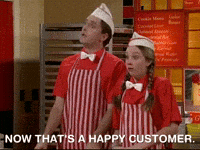
1. Typography in Branding
Think of the font of your brand as handwriting. As a person’s handwriting tells you something about them, your typography tells your customers something about your brand. Fonts can feel acceptable, serious, playful, or high-end before reading a word to a business.
2. Font Psychology: What Type of Typefaces Provokes Emotions
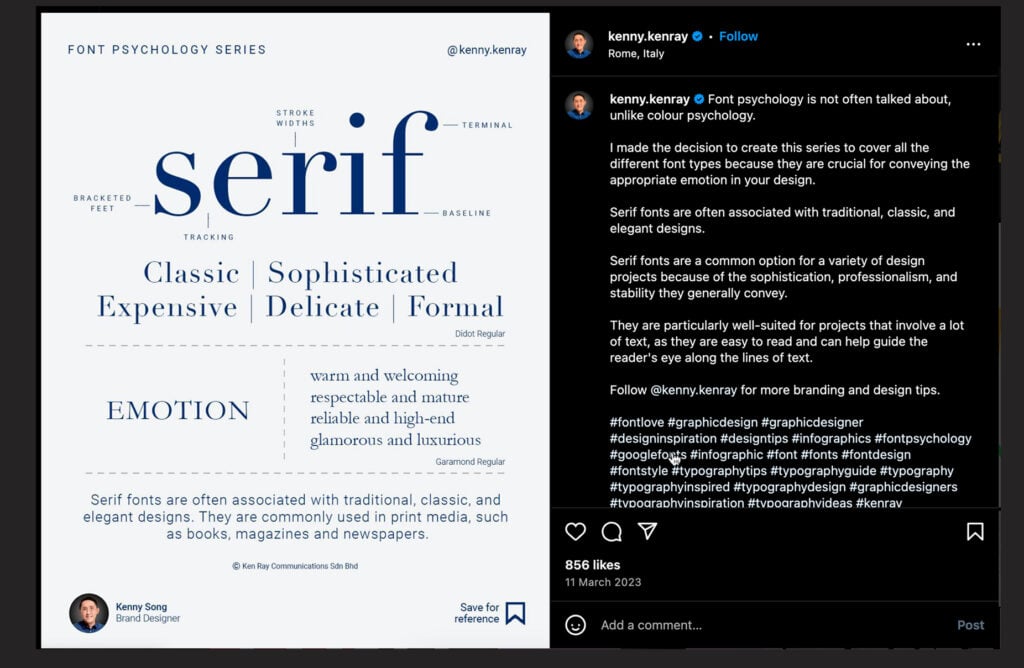
Fonts are not just letters; they carry emotions. Some feel sociable, others are formal. Studies show that different types of emotions affect how people react to a brand.
- Round, soft fonts (eg comic sensation) = unstable, informal
- Bold, thick fonts (eg effect) = strong, official
- Elegant script fonts (eg cursive style) = sophisticated, romantic
- Clean, modern writings (eg Helvatica) = Professional, minimum
3. Serif vs. Sans-Serif: Select the Right Font for your brand
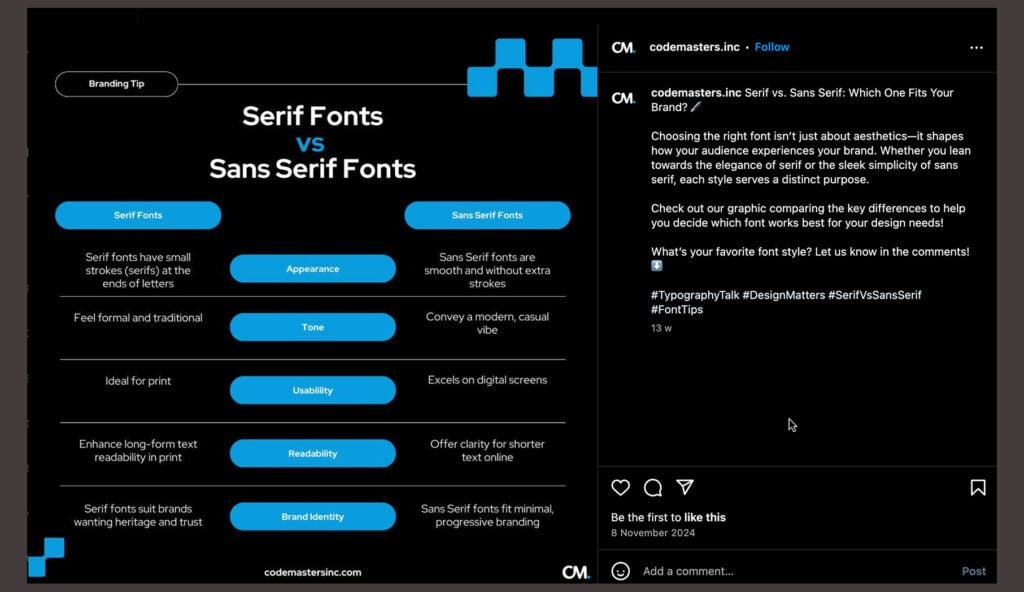
One of the biggest typography decisions is whether to go with a Serif or Sans-Serif font.
✔ Serif Font (Times New Roman, Garmond)
- Classic, elegant and reliable
- Often used by law firms, luxury marks and newspapers
✔ Sans-Serif Fonts (Helvetica, Arial)
- Clean, modern and minimum
- Used by technical brands, startups and random businesses
4. Color and Typography: The Emotional Connection
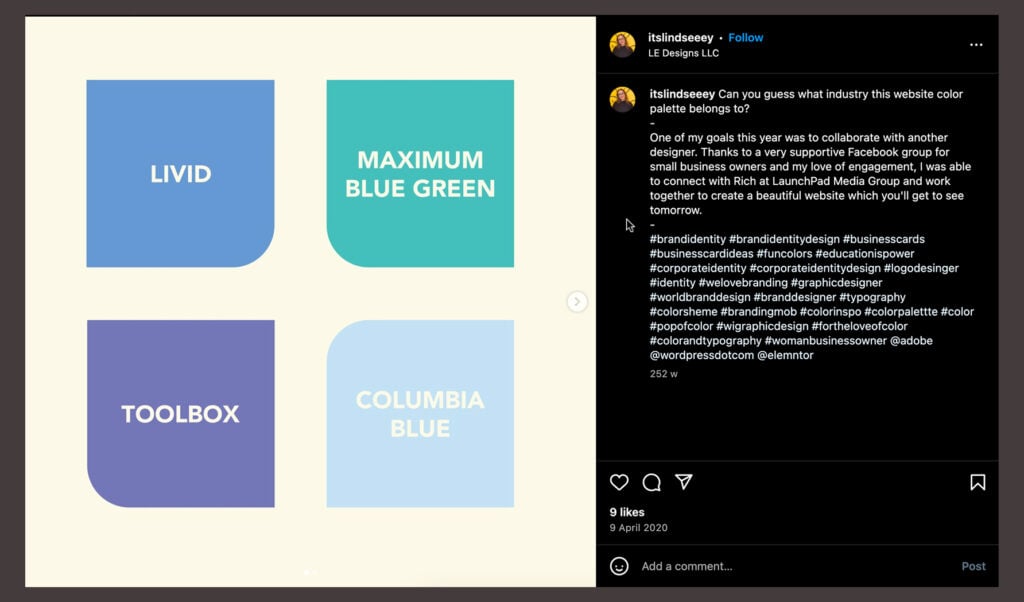
Font color plays a huge role in branding, influencing mood and perception.
- Red fonts = Excitement, passion (Think Coca-Cola)
- Blue fonts = Trust, stability (Think Facebook, IBM)
- Black fonts = Sophistication, power (Think Chanel)
- Yellow fonts = Optimism, energy (Think McDonald’s)
5. Typography and Brand Trust: Establishing Credibility
A professional, well-chosen font makes a brand look credible and reliable. On the flip side, a sloppy or inconsistent font choice can make a brand look cheap or untrustworthy. Example: Bank of America uses a clean, traditional serif font to reinforce stability and trust, while brands like PayPal go for a modern sans-serif look to feel innovative yet secure.
6. The Role of Typography in User Experience (UX)
If a font is hard to read, people won’t stay. Simple, well-spaced typography improves readability, makes content more digestible, and keeps users engaged. Example: Apple’s website uses clear, sans-serif fonts for easy reading, while some luxury brands intentionally use delicate scripts to evoke exclusivity—but risk sacrificing readability.
7. Typography and Brand Personality
Your font should match your brand’s personality:
- Luxury brands (Prada, Tiffany & Co.) use elegant, refined serif fonts.
- Playful brands (LEGO, Nickelodeon) use bold, quirky fonts.
- Minimalist brands (Tesla, Airbnb) stick to simple, clean sans-serif fonts.
8. Typography in Advertising
Ads have seconds to grab attention. A bold, striking font can make all the difference in whether someone notices your ad or scrolls past it.
- Large, bold fonts → Make headlines pop
- Handwritten-style fonts → Feel personal and authentic
- All-caps fonts → Create urgency and authority
9. Consistency in Typography
Sticking to a consistent font across your website, ads, and packaging helps reinforce your brand identity. If you keep switching fonts, it confuses your audience. Example: McDonald’s always uses the same typeface in its branding, making it instantly recognizable worldwide.
10. The Future of Typography in Branding
Typography trends evolve, and brands need to stay ahead. Some emerging trends include:
- Variable Fonts – One font that can change weight and style dynamically
- Handwritten & Custom Fonts – Personalized branding with a unique feel
- Retro & Vintage Fonts – Nostalgic typography making a comeback
- Minimalist Typography – Clean, stripped-down fonts for a modern look
Example: Netflix’s custom typeface, “Netflix Sans,” saves costs on licensing while reinforcing its brand identity.
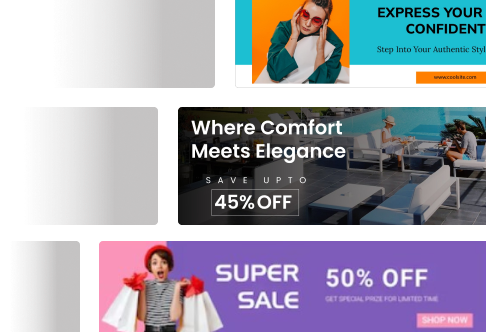
Types of Emotional Advertising Techniques
Emotions drive decisions it’s that simple. The best brands don’t just sell products; they create feelings that make people connect, trust, and take action. Whether it’s nostalgia, happiness, fear, or inspiration, emotional advertising is a powerful way to grab attention, boost engagement, and build lasting customer relationships. Here are some of the most effective emotional advertising techniques and how brands use them to win over their audiences.
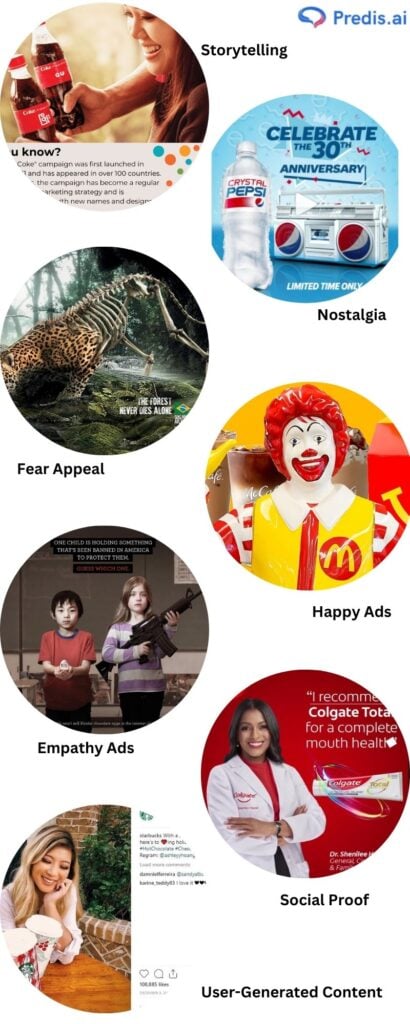
1. Storytelling: Crafting Emotionally Engaging Narratives
People don’t remember facts, but they do remember stories. A well-told story makes a brand feel real, relatable, and human. When an ad tells a story, rather than just pushing a product, people are more likely to connect with it emotionally and take action. You can boost your creativity and enhance your Instagram game with Predis.ai’s Instagram Story Maker, powered by cutting-edge AI technology to craft captivating Stories that engage and excite your followers!
2. Nostalgia Marketing: Tapping into Sentimental Memories
Ever hear a song from your childhood and instantly feel a wave of emotions? That’s nostalgia. Brands use this technique to bring back fond memories, making consumers feel good—and more likely to buy.
Example: Nintendo constantly brings back classic games like Super Mario to trigger childhood nostalgia, making long-time fans feel a deep emotional pull to their products.
3. Fear Appeal: Encouraging Action Through Urgency
Fear can be a powerful motivator. When done right, fear-based marketing pushes people to act quickly whether it’s buying insurance, quitting smoking, or signing up for a sale before it’s too late.
Example: Anti-smoking campaigns use shocking imagery to highlight the dangers of tobacco, making people more likely to quit.
4. Happy Advertising: Spreading Joy and Positivity
People love brands that make them feel good. Joyful, uplifting campaigns increase engagement, shares, and brand loyalty because positivity is contagious.
Example: Disney’s marketing is built around happiness and magic, making people associate the brand with fun and wonder.
5. Sadness and Empathy: Building Emotional Bonds
Sadness might not seem like an obvious marketing tool, but it works because it creates deep emotional connections. Ads that tug at the heartstrings can increase brand loyalty and make people more likely to share.
Example: Charity organizations often use emotional storytelling to highlight real struggles, making people feel the urgency to donate or help.
6. Social Proof and FOMO: The Power of Belonging
People trust recommendations from other people more than they trust ads. Social proof like testimonials, reviews, and influencer marketing makes people feel more confident in their choices.
Example: Apple doesn’t just say its iPhones are great—its ads feature real users taking stunning photos, making others want to join the movement.
7. User-Generated Content: Amplifying Authenticity
People trust real customers more than brands. That’s why user-generated content (UGC) is so powerful it makes marketing feel authentic and personal.
GoPro’s entire marketing strategy is built on real videos from real users, showing the product in action in a way that feels genuine and inspiring. Check out Predis.ai’s UGC campaign to learn more.
So, what emotions do you want your brand to spark?
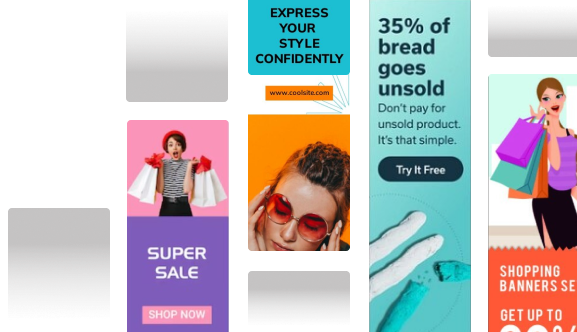
Wrapping It Up!
Are you using emotional advertising in your marketing strategy? If not, you’re missing out on one of the most powerful ways to connect with your audience and drive real results. In today’s crowded market, where consumers are bombarded with countless ads, only those that make people feel something truly stands out. Whether it’s joy, nostalgia, fear, or inspiration, emotions shape buying decisions and create lasting brand loyalty.
If you’re not using emotional branding yet, now is the time to start. Leverage storytelling, tap into nostalgia, create urgency, or spread positivity to make your brand unforgettable. The goal is to turn your audience into loyal customers who don’t just buy from you but also trust, remember, and advocate for your brand.
Frequently Asked Questions
Why Is Emotional Advertising More Effective Than Rational Marketing?
Emotional advertising connects with people on a deeper level, making them more likely to remember, trust, as well as act on a brand’s message. Studies show that emotions drive 95% of purchasing decisions, while logic only plays a minor role.
Which Emotions Work Best In Marketing?
Happiness, nostalgia, fear, surprise, and inspiration are some of the most effective emotions used in advertising. The right emotion depends on the brand and the audience. For example, Nike uses inspiration, while Coca-Cola focuses on happiness and belonging.
How Can Small Businesses Use Emotional Advertising?
Small businesses can leverage storytelling, user-generated content, and social proof to create emotional connections. Sharing customer testimonials, behind-the-scenes stories, or relatable experiences can help build trust and engagement.
